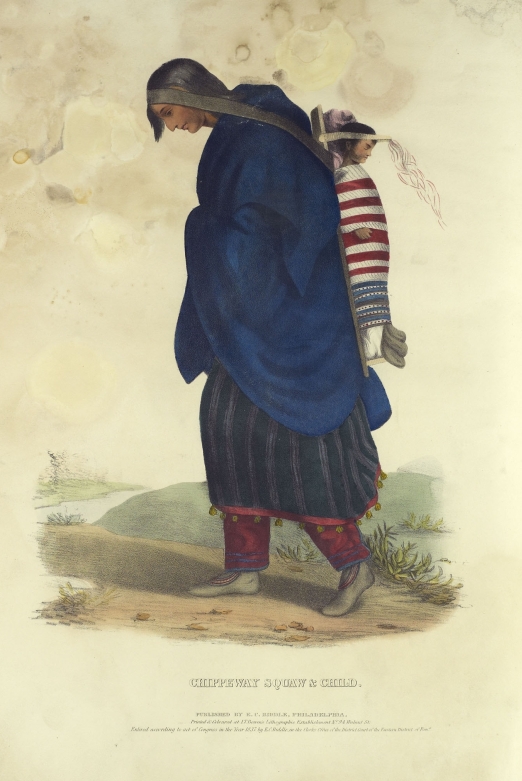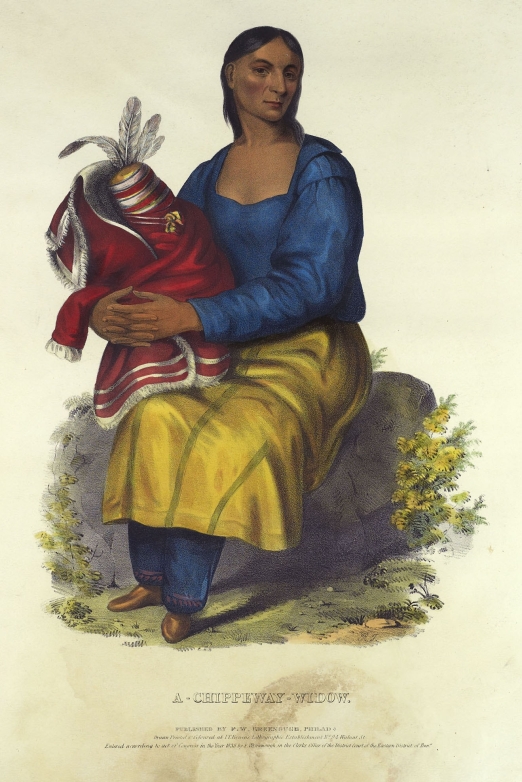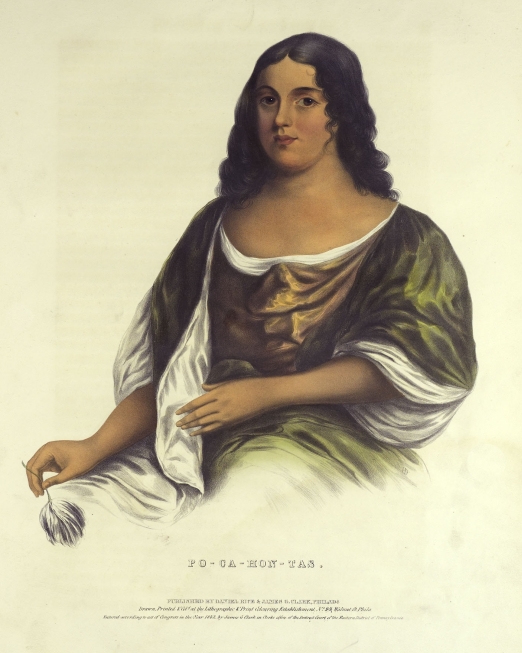
(19th Century Collection, 19th C. Coll 970.1 MAC Elephant folio)
Thomas Loraine McKenney (1785-1859) served as Superintendent of Indian Trade (1816-1822) and as Superintendent of Indian Affairs in the newly-formed Bureau of Indian Affairs (1824-1830). The 1820s were a time when the Eastern Native American tribes faced a government policy which forced them to abandon traditional lands and move westwards. McKenney thought that the Native Americans would benefit from complying with the U.S. Government and was an advocate of U.S. President Thomas Jefferson’s American Indian ‘civilization program’. Jefferson believed that it was the environments in which Native American tribes lived which rendered them ‘savage’ and that removal west, into European-style towns, would see them progress to become ‘full Americans’. Nevertheless, Jefferson and McKenney shared the opinion that Native Americans were intellectual and moral equals to white men and defended Native American cultures.
McKenney was instrumental in bringing Native American delegations to Washington D.C. where they negotiated re-settlement terms and treaties. Keen to capture something of a vanishing way of life, he commissioned Charles Bird King to paint the portraits of Native American leaders and those paintings were housed in the War Department’s museum.
Later, Henry Inman was asked by McKenney to reproduce the paintings for publication in a three-volume portfolio: History of the Indian Tribes of North America. The portfolio took more than twelve years to complete, featured hand-coloured lithography and was expensive to both produce and purchase. The gallery of original portraits was transferred to the Smithsonian Institution in 1858 but was destroyed by fire on 24th January, 1865.
Whilst the portfolio features the portraits of several well-known Native American leaders, a small number of female subjects are included in the study. Selected images are accompanied here with extracts from the text.
Chippeway squaw and child
Extract;
“The life of the Indian woman, under the most favourable circumstances, is one of continual labour and unmitigated hardship. Trained to servitude from infancy, and condemned to the performance of the most menial offices, they are the servants rather than the companions of man. Upon them, therefore, fall with peculiar severity, all those vicissitudes and accidents of savage life which impose hardships and privations beyond those that ordinarily attend the state of barbarism”
“The woman who, during the season of plenty, was worn down with the labour of following the hunter to the chase, carrying the game and dressing the food, now [during periods when resources are scarce] becomes the purveyor of the family, roaming the forest in search of berries, burrowing in the earth for roots, or ensnaring the lesser animals. While engaged in these various duties, she discharges also those of the mother, and travels over the icy plains with her infant at her back.
Iroquois and Sioux tribes, by the late Eighteenth Century they controlled Ontario, Manitoba, Saskatchewan, Michigan, Minnesota, North Dakota, Illinois, Indiana and Ohio but lost most of their land when white settlers forced them onto reservations in the Nineteenth Century. Despite the name Hiawatha deriving from the Iroquois, Henry Wadsworth Longfellow’s epic poem, The song of Hiawatha (1855), contains place names and stories originating from the Chippeway”.
“Women (and children) were expected to perform such tasks as foraging for food and firewood, selecting plants to be used as thatch, farming, preparing feasts, making dyes and needlework (the moccasins worn by both sexes were often dyed red, yellow, blue and green and the winter months were passed adding quill work and moose hair designs)”.
(vol. 1)
The Chippeway widow
The portrait of a Chippeway widow is a representation rather than the portrait of a known individual.

(19th Century Collection, 19th C. Coll 970.1 MAC Elephant folio)
Extract;
“A Chippeway widow, on the death of her husband, selects from his scanty wardrobe, a complete suit of his best clothes, which she makes up into a bundle. This is placed near her while at work, and is carried wherever she goes. She calls it her husband, treats it with the respect which would be due to a living lord and master, and would be considered as disgracing herself and treating his memory with disrespect, if she was to part with it even for a moment . . . . The Chippeway widow carries her “husband” during the season of mourning, which is one year, and during that time cannot marry without gross impropriety. If she does not marry at the close of the year, she usually continues to carry the badge of her widowhood until she is relieved of it by the nearest relatives of her deceased husband, who may at any time, whenthey conceive she has mourned long enough, call upon her, and take away the bundle, after which she is at liberty to contract a second marriage“.
(vol. 2)
Pocahontas

(19th Century Collection, 19th C. Coll 970.1 MAC Elephant folio)
Pocahontas (c.1595-1617) was the daughter of a Native American chief in Virginia. When English settler, Captain John Smith, described his capture by a Native American hunting party, he retrospectively credited Pocahontas as having saved him. The omission of her from his earliest accounts has made historians question the veracity of the tale but it has been established that she at least befriended Smith and visited the Jamestown colony, bringing food when it was most needed and playing with the children.Fiction romanticises the relationship between Pocahontas and Smith but there is no evidence that they were lovers. Captured by the English in 1613, she was taught about Christianity and baptised as Rebecca.
“Though born and reared in savage life, [Pocahontas] was a creature of exquisite loveliness and refinement. The gracefulness of her person, the gentleness of her nature – her benevolence, her courage, her noble self-devotion in the discharge of duty, elevate this lovely woman to an equality with the most illustrious and most attractive of her sex; and yet those winning graces and noble qualities were not the most remarkable features of her character, which was even more distinguished by the wonderful tact, and the delicate sense of propriety, which marked all the scenes of her brief, but eventful history.”
(Vol. 3)
